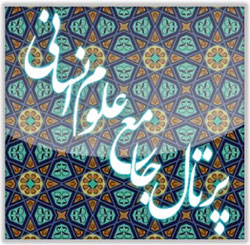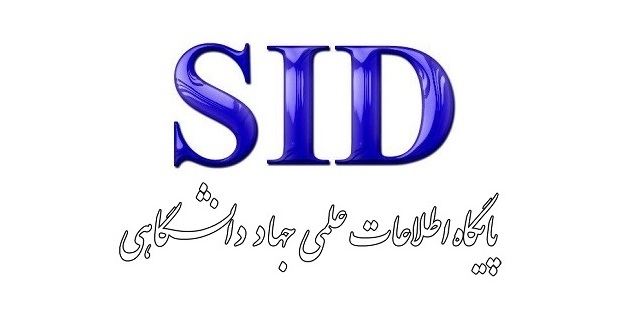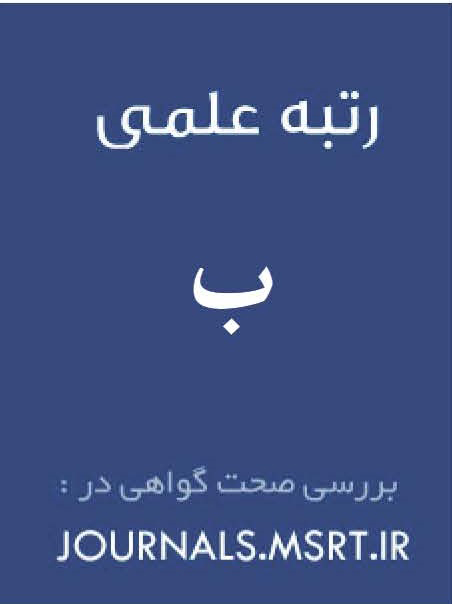رویکرد گلستان سعدی به نقش محیط دوستان و همسالان در ارتکاب جرم
کلمات کلیدی:
گلستان سعدی, جرمشناسی, همسالان, همنشینی افتراقی, پیشگیری از جرم, تربیت خانوادگی, تحلیل محتوای کیفیچکیده
رفتارهای مجرمانه از دیرباز چالش جوامع بوده و جرمشناسی بر نقش محیط اجتماعی، بهویژه دوستان و همسالان، تأکید دارد. این پژوهش با هدف بررسی رویکرد گلستان سعدی به نقش محیط دوستان و همسالان در ارتکاب جرم انجام شد تا با مقایسه آن با نظریههای معاصر، راهکارهایی برای پیشگیری ارائه دهد. روش تحقیق کیفی و توصیفی-تحلیلی با استفاده از تحلیل محتوای متنی گلستان سعدی و نرمافزار NVivo بود. جامعه آماری شامل ۱۲ حکایت مرتبط از متن گلستان بود که بهصورت هدفمند انتخاب شدند. یافتهها نشان داد که ۵۸٪ حکایات به تأثیر منفی همسالان، ۳۳٪ به راهکارهای پیشگیرانه مانند تربیت خانوادگی، و ۸٪ به نقش انحصاری تربیت پرداختهاند. سعدی با تأکید بر "همنشین بد"، انحراف تدریجی را توصیف کرده که با نظریههای همنشینی افتراقی ساترلند و یادگیری مشاهدهای باندورا همراستاست، هرچند به عوامل ساختاری کمتر توجه دارد. نتیجهگیری حاکی از آن است که گلستان سعدی منبعی جرمشناختی ارزشمند است که با تلفیق با رویکردهای مدرن، میتواند در سیاستگذاری آموزشی و پیشگیری از جرم، بهویژه در فضای مجازی، کاربرد داشته باشد. این مطالعه به غنای دانش میانرشتهای کمک کرده و ضرورت تحقیقات آینده با دادههای میدانی را برجسته میسازد.
دانلودها
مراجع
1. Malakouti N, Mohseni, Farid. Community-Based Prevention of Delinquency in Children and Adolescents in Virtual Educational Environments (with an Emphasis on Criminological Findings). Quarterly Journal of Judicial Perspectives. 2023;28(102):207-34.
2. Najafi, Mousavifar. A Reflection on the Trend of Artificial Intelligence in Crime Prevention. Quarterly Journal of Legal Civilization. 2025;8(23):e218735.
3. Sa'di Ma-D. Sa'di's Golestan. Tehran: Kharazmi Publications; 1989.
4. Mahdavi M, Shahmaradi M, Nabavi Chashmi SS, Mostafalou M, editors. A Study of Social and Cultural Etiquette and Skills in Sa'di's Golestan and the Role of the Teacher in Teaching Persian Language and Literature to New Generation Students. The 11th International Conference on Interdisciplinary Studies in Management and Engineering; 2024.
5. Gholian A, Mostali P. The View of Iranian Sa'di Scholars on the Social Rules and Norms Used and Emphasized by Sa'di. Literary Textual Research. 2021;25(87):140-66.
6. McCuddy T. Peer delinquency among digital natives: The cyber context as a source of peer influence. Journal of Research in Crime and Delinquency. 2021;58(3):306-42.
7. Azad Gholami Khesmakhi A, Abbachi M, Mir E, Yaghoubi. Spatial Analysis of Vandalism Behavior among Middle and High School Students in the Schools of District 2 of Rasht City. Journal of Geographic Engineering. 2024;8(1):103-22.
8. Rajiyan Asli A, Rahiminejad E, Razmavar B. Legislative Criminal Policy in the Mirror of Cultural Criminology: With a Critical Approach to Examples of its Challenges in Iran. Journal of Criminal Law and Criminology Research. 2023;11(21):259-302.
9. Yousefi H, Araghi M, Mohammadi, Mohammadaref. An Examination of Sa'di's Bustan Based on Bandura's Observational Learning Theory. Teaching Research Journal. 2022;10(3):247-77.
10. Moein al-Din Daryaei MR, Rahmat M, Sadeghzadeh M. The Theory of Differential Association in the Mirror of Sa'di's Golestan. Journal of Persian Language and Literature Treasury. 2025.
11. Rezazadeh H, Dalavari S. Narrative on Silence and Conversation: A Collection of Narratives from Chapters Four and Eight on the Benefits of Silence and Etiquette of Conversation from Sa'di's Golestan: Dar Qalam; 2019.
12. Zakaria E, Kamarudin NN, Mohamad ZS, Suzuki M, Rathakrishnan B, Bikar Singh SS, et al. The role of family life and the influence of peer pressure on delinquency: qualitative evidence from Malaysia. International journal of environmental research and public health. 2022;19(13):7846.
13. Sun G, Zhang TH. Peer Influence on Youth Delinquency: How Does School-Level Teacher Quality Matter? Crime & Delinquency. 2025;71(10):3391-416.
14. McMillan C, Felmlee D, Osgood DW. Peer influence, friend selection, and gender: How network processes shape adolescent smoking, drinking, and delinquency. Social networks. 2018;55:86-96.
15. Kaiser F. The influence of differential peer associations on delinquency varies depending on the combination of unstructured socializing and personal morals. Kriminologie-Das Online-Journal| Criminology-The Online Journal. 2021(1):72-99.
16. O'Neill KK. Mixed-sex peer groups and violent delinquency: understanding the separate and combined influence of mixed-sex peer groups, sex, and romance on violent delinquency. Journal of Crime and Justice. 2023;46(5):607-26.
17. Laursen B, Veenstra R. In defense of peer influence: The unheralded benefits of conformity. Child Development Perspectives. 2023;17(1):74-80.
18. Allen JP, Loeb EL, Kansky J, Davis AA. Beyond susceptibility: Openness to peer influence is predicted by adaptive social relationships. International Journal of Behavioral Development. 2022;46(3):180-9.
19. Mowen TJ, Boman Iv JH. The duality of the peer effect: The interplay between peer support and peer criminality on offending and substance use during reentry. Crime & Delinquency. 2018;64(8):1094-116.
20. Meldrum RC, Young JT, Weerman FM. Changes in self-control during adolescence: Investigating the influence of the adolescent peer network. Journal of Criminal Justice. 2012;40(6):452-62.
21. Yeng KY, Mohamad ZS. A case study on peer influence and peer pressure in juvenile delinquency. Int J Acad Res Bus Soc Sci. 2023;13:409-23.
22. San'atjou D, Daghighi D, Darbandi, Shahrouz. The Role of Genes in Cybercrimes and Its Effect on the Commission of Criminal Behavior with an Emphasis on Cyber Criminology. Quarterly Journal of Legal Civilization. 2024;7(20):103-22.
دانلود
چاپ شده
ارسال
بازنگری
پذیرش
شماره
نوع مقاله
مجوز
حق نشر 2025 Moein Aldin Daryaei (Author); Mohammadreza Rahmat; Mahmood Sadeghzadeh (Author)

این پروژه تحت مجوز بین المللی Creative Commons Attribution-NonCommercial 4.0 می باشد.








